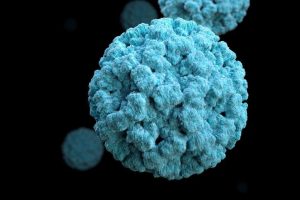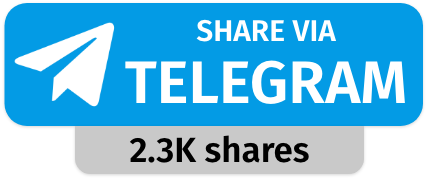Today’s Current Affairs: 3rd February 2025 for UPSC IAS exams, State PSC exams, SSC CGL, State SSC, RRB, Railways, Banking Exam & IBPS, etc
Table of Contents
Union Budget 2025-26:

The Union Budget 2025-26 was presented by the Union Finance Minister in the Parliament recognising 4 engines of development- agriculture, Micro, Small and Medium Enterprises (MSME),investment and exports.
- The Union Budget 2025-26, with the theme Sabka Vikas, aims to stimulate balanced growth across all regions.
1st Engine- Agriculture:
- Prime Minister Dhan-Dhaanya Krishi Yojana: Announced to cover 100 low agricultural productivity districts, benefiting 1.7 crore farmers, enhancing irrigation, and post-harvest storage facilities.
- A ‘Rural Prosperity and Resilience’ programme will be launched with states to address agricultural underemployment through skilling, investment, and technology.
- Atma Nirbharta in Pulses: A 6-year mission focusing on Tur, Urad, and Masoor announced launched, ensuring climate-resilient seeds and remunerative prices.
- Central agencies (NAFED and NCCF) will be prepared to procure these 3 pulses from farmers over the next 4 years.
- Enhanced Kisan Credit Card (KCC) Limit: Raised from ₹3 lakh to ₹5 lakh to facilitate credit flow for 7.7 crore farmers.
- National Mission on High Yielding Seeds: To strengthen research, ensuring availability of 100+ high-yielding and pest-resistant seed varieties.
- Mission for Cotton Productivity: A 5-year initiative promoting sustainable farming, increasing extra-long staple cotton production, and improving quality.
- Makhana Board in Bihar: To be established to enhance production, processing, and value addition of Makhana.
- Comprehensive Program for Fruits and Vegetables: To promote efficient supply chains and ensure better market prices for farmers.
- Fisheries Development: New framework for sustainable fishing in the Indian Exclusive Economic Zone and High Seas, focusing on Andaman & Nicobar and Lakshadweep.
- Urea Plant in Assam: A new urea plant in the premises of Brahmaputra Valley Fertilizer Corporation Ltd (BVFCL) with 12.7 lakh metric ton capacity to boost agricultural productivity.
2nd Engine- MSMEs:
- Revised MSME Classification: Investment and turnover limits increased to 2.5 times, expanding credit opportunities for small businesses.
- Micro Enterprise Credit Cards: Rs 5 lakh credit facility for 10 lakh micro enterprises, promoting financial inclusion and economic participation.
- Credit Cover for MSMEs: Guarantee cover increased from ₹5 crore to ₹10 crore, enabling higher loan access.
- Focus Product Scheme for Leather and Footwear: Expected to generate 22 lakh jobs and ₹4 lakh crore turnover, and exports of over ₹ 1.1 lakh crore.
- Toy Sector Development: Clusters and innovation-based manufacturing fostering ‘Made in India’ brand in global markets.
- National Institute of Food Technology: A National Institute of Food Technology, Entrepreneurship and Management to be established in Bihar, promoting food processing, skilling, and entrepreneurship.
- Fund of Funds for Startups: To be established with an expanded scope and an additional contribution of ₹10,000 crore.
3rd Engine- Investment
- Urban Challenge Fund: ₹1 lakh crore allocated to support ‘Cities as Growth Hubs,’ ‘Creative Redevelopment of Cities,’ and ‘Water and Sanitation,’ with ₹10,000 crore allocated for 2025-26.
- Jal Jeevan Mission: With total budget outlay enhanced to Rs 67,000 Crore and extension till 2028, ensuring universal piped water coverage with enhanced funding for rural water projects.
- 15 crore households representing 80% of India’s rural population have benefitted by the mission.
- Maritime Development Fund: ₹25,000 crore fund (49% contribution by the Government), supporting long-term financing for shipbuilding, ports, and logistics infrastructure.
- Expansion of IITs: Additional infrastructure for 6,500 more students, boosting India’s technical education capacity.
- PM Research Fellowship: 10,000 fellowships for advanced research in IITs and IISc.
- Day Care Cancer Centers: To be set up in all district hospitals in the next 3 years, with 200 Centres in 2025-26, ensuring affordable cancer treatment accessibility.
- Bharatiya Bhasha Pustak Scheme: Digital Indian language books to enhance school and higher education accessibility.
- Nuclear Energy Mission for Viksit Bharat: To be set up with a ₹20,000 crore outlay for Small Modular Reactors (SMRs), with at least 5 indigenously developed SMRs operational by 2033.
- Amendments to the Atomic Energy Act and the Civil Liability for Nuclear Damage Act will be taken up for active partnership with the private sector.
- UDAN – Regional Connectivity Scheme: A revised UDAN scheme will enhance regional connectivity to 120 new destinations, aiming to carry 4 crore passengers over the next 10 years.
- It will also support helipads and smaller airports in hilly, aspirational, and North East regions.
- Greenfield Airport in Bihar: Greenfield airports will be developed in Bihar, alongside the expansion of Patna airport and a brownfield airport at Bihta (Patna).
- Western Koshi Canal ERM Project: Financial support for irrigation infrastructure in Mithilanchal, Bihar.
- Tourism for Employment-led Growth: The top 50 tourist destinations across the country will be developed in partnership with states through a challenge mode.
4th Engine- Export Promotion:
- Export Promotion Mission: It will be established, with sectoral and ministerial targets, led collaboratively by the Ministries of Commerce, MSME, and Finance.
- BharatTradeNet (BTN): A unified digital platform facilitating international trade documentation and financing solutions.
- National Framework for GCC: Policy incentives to promote outsourcing hubs (Global Capability Centres) in emerging Tier-2 cities.
- Warehousing Facility for Air Cargo: Development of storage infrastructure for high-value perishable exports.
Taxation and Financial Reforms:
Direct Taxes: No Income Tax for annual incomes up to ₹12 lakh, extended to ₹12.75 lakh for salaried taxpayers with deductions.
Income (in ₹)
- ₹0 – ₹4 lakh =Nil
- ₹4 – ₹8 lakh =5%
- ₹8 – ₹12 lakh =10%
- ₹12 – ₹16 lakh =15%
- ₹16 – ₹20 lakh=20%
- ₹20 – ₹24 lakh =25%
- Above ₹24 lakh =30%
Pradhan Mantri Shram Yogi Maandhan Yojana : Budget 2025

The Budget 2025-26 allocation under the PM Shram Yogi Maandhan Yojana increased by 37% compared to last year.
- It is a government scheme meant for the old-age protection and social security of unorganized workers.
- It is a Central Sector Scheme administered by the Ministry of Labour and Employment and implemented through Life Insurance Corporation of India and CSC eGovernance Services India Limited (CSC SPV).
- LIC is the Pension Fund Manager and responsible for pension pay out.
- The amount collected under the PM-SYM are invested as per the investment pattern specified by the Government of India.
- Eligibility:
- Should be an Indian Citizen
- Unorganised Workers (working as street vendors, agriculture-related work, construction site workers, workers in industries of leather, handloom, mid-day meal, rickshaw or auto wheelers, rag picking, carpenters, fishermen, etc.
- Age group of 18-40 years
- Monthly income is below Rs. 15000 and not a member of EPFO/ESIC/NPS (Govt. funded).
- It is a voluntary and contributory pension scheme.
- Each subscriber under the PM-SYM shall receive minimum assured pension of Rs 3000/- per month after attaining the age of 60
- The subscriber’s contributions to PM-SYM shall be made through ‘auto-debit’ facility from his/ her savings bank account/Jan- Dhan account.
- The subscriber is required to contribute the prescribed contribution amount from the age of joining PM-SYM till the age of 60 years.
- It is a pension scheme on a 50:50 basis where prescribed age-specific contributions shall be made by the beneficiary and the matching contribution by the Central Government.
- During the receipt of pension, if the subscriber dies, the spouse of the beneficiary shall be entitled to receive 50% of the pension received by the beneficiary as a family pension. Family pension is applicable only to spouse.
- If a beneficiary has given regular contributions and died due to any cause (before age 60 years), his/her spouse will be entitled to join and continue the scheme subsequently by payment of regular contributions or exit the scheme as per provisions of exit and withdrawal.
- Even if the subscriber wants to opt out of the scheme before 10 years, the share of the subscriber will be given back along with the interest amount accrued.
- If the subscriber opts out after 10 years but before 60 years of age, the share of the subscriber contribution, adding the accumulated interest will be given back to the candidate.
Iran’s New Missiles:

Iran recently unveiled two missiles, named Etemad and Ghadr-380.
Etemad Missile:
- It is a new ballistic missile built by the Iranian Defence Ministry.
- Dubbed Etemad, or “trust” in Persian, it has a maximum range of 1,700 kilometres.
- With a length of 16 meters and a diameter of 1.25 meters, the missile is equipped with a precision-guided warhead.
Ghadr-380:
- It is an anti-warship cruise missile developed by Iran.
- It has a range of over 1,000 kilometers.
- It has anti-jamming capability.
Ballistic missiles are powered initially by a rocket or series of rockets in stages, but then follow an unpowered projectile trajectory that arches upwards before descending to reach its intended target.
- Ballistic missiles can carry both nuclear and conventional
- Cruise missiles are propelled by jet engines, much like an airplane. They are self-propelled for the majority of their time in the air, flying in a relatively straight line and at lower altitudes, as low as a few meters off the ground.
- Flying low to the surface of the earth, they use more fuel but they are very difficult to detect.
Henipavirus:

Camp Hill virus, a henipavirus related to Nipah, has been recently detected in North America, raising concerns of a potential outbreak.
- Henipaviruses (family Paramyxoviridae) are zoonotic, negative-sense RNA viruses.
- Fruit bats (Pteropus species, also called ‘flying foxes’) are the natural hosts of Henipaviruses.
- Henipaviruses can cross species barriers, infecting various mammals, including humans.
- They often cause severe respiratory illness and encephalitis and are associated with high case fatality rates.
- The two most notable henipaviruses are Hendra virus and Nipah virus.
- Hendra virus, first identified in Australia, has caused outbreaks with mortality rates up to 70%.
- The Nipah virus has been linked with numerous outbreaks in Southeast Asia, particularly in Malaysia and Bangladesh, with case-fatality rates estimated at 40%–75% depending on surveillance and clinical management.
- Direct contact with infected animals (e.g., bats, horses, pigs).
- Consumption of contaminated food or water.
- Human-to-human transmission through bodily fluids, close contact, or respiratory droplets.
- Symptoms:
- Common symptoms include dizziness, headache, fever, and myalgias.
- Fatality often occurs when the disease progresses to severe encephalitis and symptoms like confusion, abnormal reflexes, seizures, and coma occur.
- It lies in their ability to encode several proteins which block the innate immune response in infected animals and humans.
- These inhibit the cell’s response to viral infection, and allow viral replication.
- Treatment: Treatment is symptomatic, and no vaccine or antiviral drug has been developed so far to treat the disease.
SwaRail Application:

The Ministry of Railways has introduced the SuperApp ‘SwaRail’, a one-stop solution for seamless railway services.
- SwaRail integrates various railway services, eliminating the need for multiple applications and reducing space consumption on user devices.
- A key focus of the App is enhancing user experience with a seamless and clean user interface (UI).
- The App caters to a wide range of user needs, including:
- Reserved and Unreserved ticket bookings
- Parcel and Freight Enquiries
- Train and PNR status enquiries
- Food Orders on Trains
- Rail Madad for Complaint Management, etc.
- It has been developed by the Centre for Railway Information Systems (CRIS).
Deepor Beel : Winter Birding Festival 2025

The recently conducted third annual Deepor Beel Winter Birding Festival 2025 saw an increase in the number of both migratory and residential birds compared to the count done in 2024.
Deepor Beel:
- It is a perennial freshwater lake located on the outskirts of Guwahati, in the Kamrup district of Assam.
- It lies in a former channel of the Brahmaputra
- It covers an area of 4.1 sq.km.
- It is the only major stormwater storage basin for the city of Guwahati.
- The lake’s outflow is the Khandajan rivulet, which joins the Brahmaputra.
- It was recognised as a Ramsar Site in 2002 and as an Important Bird and Biodiversity Area (IBA) in 2004. It is the only Ramsar site in Assam.
- This lake is a staging site on migratory flyways, and some of the largest concentrations of aquatic birds in Assam can be seen, especially in winter.
- Some globally threatened birds are supported, including Spot-billed Pelican, Lesser Greater Adjutant Stork, and Baer’s Pochard.
- About 50 fish species and aquatic resources provide livelihood support to about 1,200 households residing in about 12 villages on the fringes of the wetland.
- The Rani and Garbhanga hills, the habitat of the Asiatic elephants on the southern side of the beel, are part of this ecosystem.
India’s Defence Ministry Pilot Study on LAWS:
India’s Defence Ministry took a significant step forward in enhancing its military capabilities by conducting a pilot study on Lethal Autonomous Weapons Systems (LAWS). This study, conducted in collaboration with the Manohar Parrikar Institute of Defence Studies and Analyses, focuses on the growing role of Artificial Intelligence (AI) in modern warfare. As nations around the world continue to advance their defence technologies, India is exploring how AI can be integrated into its defence strategy while also considering the ethical, legal, and accountability challenges of using such advanced systems in military operations.
Mount Taranaki Granted Legal Personhood:
On January 30, 2025, a historic moment unfolded in New Zealand as the country’s Parliament passed a law that grants Mount Taranaki, also known as Taranaki Maunga, legal personhood. This unprecedented decision recognizes the mountain as a living entity with rights similar to those of a human being. This move is deeply rooted in the Māori people’s spiritual and cultural beliefs and aims to correct past injustices while promoting environmental conservation.
Right to Die with Dignity:
Karnataka allowed the setting up medical boards in hospitals to facilitate requests for dignified deaths.It has been done as per Supreme Court verdict in the Common Cause vs. Union of India Case, 2018 that upheld legal validity of passive euthanasia.
Passive euthanasia involves withholding or stopping life-sustaining treatments, letting a person die naturally from their condition.The Supreme Court’s 2023 order affirms the right to die with dignity under Article 21 and eases norms for passive euthanasia.
Inter-State Committees for Workers’ Social Security:
Labour Ministers and Secretaries from Union and State governments concluded with major discussions on labour reforms and workers’ welfare.It focused on the implementation of the new Labour Codes and expanding social security coverage. Three committees comprising five states each will develop a sustainable model for social security for workers, with reports due in March 2025.




